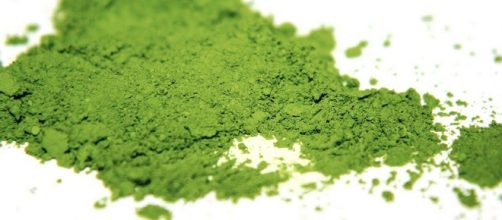Let’s start from the beginning. In this case, that's the Tang Dynasty (7th-10th centuries). During this time, they began to harvest green tea and store it in brick form in order to make transport easier. Later in the Song Dynasty (10th-13th centuries) came the method of grinding the tea leaves into a powder, creating Matcha as we know it today.
Zen Buddhists were the first to use matcha for it’s meditational purposes. They began to drink the tea before their afternoon meditations to bring clarity, focus, and well-being. It wasn’t only Zen Buddhists who saw the advantages of matcha.
The shogun, or military dictator, used it for a ceremonial tea drinking with his warriors in order to achieve additional energy and mental acuity before battle.
Matcha powder was introduced to Japan in 1191 by the monk Eisai who described matcha as the "elixir of the immortals.” Japanese tea plantations perfected the harvesting process to achieve the ultimate therapeutic matcha.
At first, matcha was only made to meet the demands of the shogun and nobility. That changed in 1738 when Sohen Nagatani invented the "uji" green tea processing method. He did this in order to bring the benefits of matcha to the people of Japan.
Health benefits
In recent years, matcha has become an Internet sensation. Not only is it aesthetically pleasing and delicious, but it’s got tons of Health Benefits as well.
Since matcha is made by grinding up green tea leaves, you ingest the whole leaf, rather than just steeping it in hot water. This means you get all the nutrients the leaf has to offer. One of the most attractive things about matcha is antioxidants. Antioxidants are important because they prevent chronic diseases, help fight infections, and even slow aging.
A single cup of matcha tea has 137 times more antioxidants than its green tea counterpart. But this isn’t the only thing matcha is packed with. It also provides vitamin C, selenium, zinc, and magnesium.
Dr. Kristi Funk, a breast cancer surgeon most known for her surgical treatment of celebrities Angelina Jolie and Sheryl Crow, claims matcha will “torch body fat.” It does this by boosting metabolism and burning calories.
It also lowers cholesterol and blood sugar levels.
How to include it in your life
Matcha powder is one of the most versatile superfoods on the market. You can easily sprinkle it in your smoothies, baked goods, and even savory dishes. A quick search will turn up hundreds of recipes. Here’s a sample of the unique dishes that can include matcha:
Breakfast:
Pancakes: Forget maple syrup and butter. Top your pancakes and waffles with fresh berries and matcha powder for an energizing start.
Coffee: Instead of sugar, spike your coffee with high-quality matcha for a subtle, sweet taste. A cup of this is sure to make you ready to tackle any obstacle you face.
Lunch:
Seasoning: Use matcha instead of salt and pepper to season your roasted veggies for a fresh, herby taste.
Lentils: superfood + Superfood, what’s better than that? Give your lentils a hearty, earthy taste with a bit of matcha.
Dinner:
Miso: Adding matcha to miso will reduce it’s salty flavor, creating a unique dinner.
Curry: When sauteing your chickpeas, add matcha along with traditional curry seasoning for an extra kick.
Dessert:
Ice Cream: Grab this frozen delicacy at Japanese stores or select ice cream vendors.
Popcorn: Movie night will be much more fun with green popcorn! Blended with two parts sea salt gives you a salty, sweet, and herbal treat.
This superfood can easily be found online at Target and Walmart.


